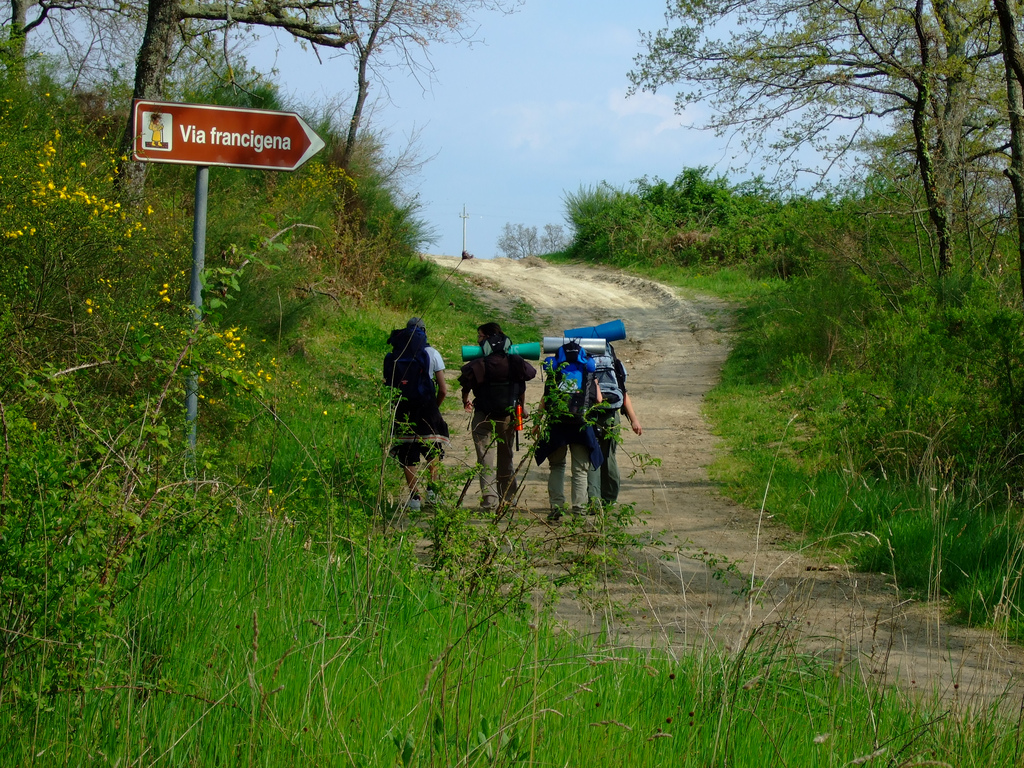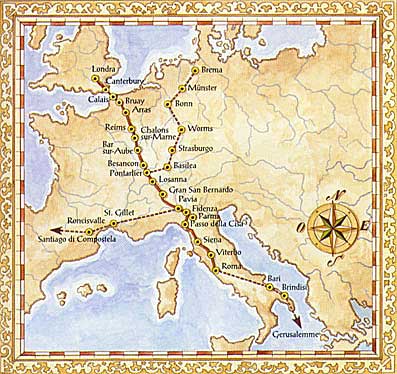Wine is the poetry of earth.
The Via Francigena, anciently called Via Francesca or Romea, is a pilgrimage route that led from Canterbury to Rome and constituted one of the most important European communication roads in medieval times.
With the end of the Longobardi dominance and the beginnings of the Frankish power, the road that started at the pass of Monte Bardone became more travelled and, slowly, became a route of some importance. The Franks gave more importance to a road connection to Rome than had the Longobardi; hence the Carolingian administration’s desire that the road be made more easy to travel on. Thus the road of the Longobardi became the road of the Franks, for the Franks included not just the French Carolingians, but the Carolingians of Germany as well; the Via Francigena was therefore the road that connected today’s France and the Germanic lands.
Sigeric, the Archbishop of Canterbury, left a record of his journey, between 990 and 994, from Rome back to his Episcopal see, with precise descriptions of the various stages as far as the English Channel, near Calais.
Even though it is obvious that the Via Francigena, at least in some of its sections, consisted, like most medieval roads, of a group of alternative routes, Sigeric’s itinerary is unequivocal testimony of an important arterial road with strategic connecting points: passes, river crossings, small inns and taverns. As any means of transit, the road united people of different countries and made possible a kind of cultural osmosis, so much so that it can be assumed that the substantial unity of European medieval culture was made possible by the movements on the great communication links such as the Via Francigena. Frequent evidence of this can be found along segments of the road, such as church names, not uncommonly dedicated for example to the popular saints of Gallic Christianity: the stretch of road from San Pietro a Coiano to San Genesio touched the hamlet of San Quintino. The church of San Quintino is, significantly, dedicated to a French saint and figures in a parchment of 991 in the Archdiocesan Archives of Lucca. Nearby is an interesting place name that recalls the presence of the road: “Baccanella,” or small tavern, where pilgrims would rest along the journey.




